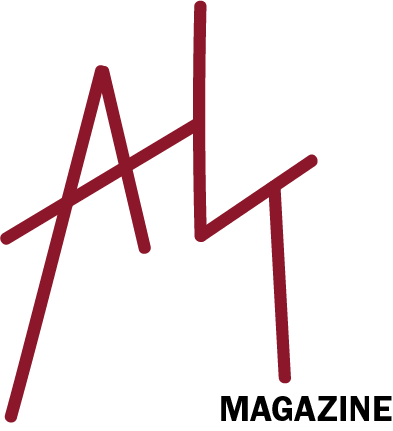by Jillian Turner
A “spectacle” is defined as a display to be viewed as notable, unusual, or entertaining. It's an event meant to excite or evoke something—a feeling, reaction, or curiosity. With a negative connotation, people are often told not to make a scene or bring attention to themselves; however, sometimes that is exactly what is needed.
The University of Wisconsin-Madison has a long history of discrimination, prejudice and outright violence. In a recent culmination of art and history, an exhibit titled Sifting and Reckoning brought actions of hate and reactionary displays of student politics and protest to the public eye. The exhibit was only displayed for a short period of time, but the content spans decades.
In case you did not have a chance to make it over to the Chazen to see the display, you can head over to the sifting and reckoning website to see a digitized version of the exhibit, but here is a brief overview of some events you may have seen:
1951: Students of UW organize against the university’s police department
In response to concerning and violent behavior from officers in UWPD—throwing leaded clubs at students, searching rooms without proper authority, and inappropriate responses to student sexual activity—The Daily Cardinal publishes an article titled, “Brash, Outdated Police Practices Need Action, Now.”, calling out UWPD. Students and faculty had been raising concerns about the officers prior to the article being released, but the university’s president at the time, E.B. Fred, made no move to reprimand their conduct. The Student Board began to look into the department themselves and released a statement to reevaluate the attitudes and conduct of the officers. As a result, the UWPD was fully changed in the way they operated.
1966: Black Students Strike for Equal Rights
Black students at UW-Madison began organizing together in support of each other, especially in the heat of the Civil Rights Movement sweeping the nation. They would meet together in the “colored people corner” of Der Rathskeller in Memorial Union. The need for their voices to be heard ramped up after the assassination of Martin Luther King Jr. in 1968. The university was going to hold a memorial for the activist and the Black students wanted to use the event as a platform to discuss racism on campus and their experiences. The university needed to face its racialized past and present for the benefit of their students. In support of Black students at UW-Oshkosh who were vying for equal rights on campus, Madison students prepared a demonstration as well.
1969: Black Students Demanding Power
After the previous years of striving for rights and equal treatment, on February 7th, 1969, a group of Black students gave Chancellor Edwin Young a list of 13 demands. Some items on the list included a campus social center for Black students, scholarships for Black students, and admission for their expelled Black students from UW-Oshkosh. If their needs were not met, they swore to protest and keep the campus closed by “disruption or destruction”. The next morning, 1,500 students organized across campus to support the Black students’ fight. The Black Student Strike ended weeks later after a fight between students, police officers, and administrators broke out. The results of this strike were as follows: bringing in lecturers to educate the student body on Black history and culture and meeting three of the 13 demands. The Department of Afro-American Studies and the Black Cultural Center are the only results that remain.
1992: The Gender and Sexuality Campus Center is founded
Alnisa Allgood founded this center through segregated fees to get around the Board of Regents who disapproved of the support center. It was at first located off campus in the Capital Center, but can now be found in the Red Gym on Langdon Street.
2009: American Indian Student & Cultural Center founded
Created as a space for Native student groups to find comfort and support on campus, it now houses the Ojibwe language group, Wunk Sheek Drum, Alpha Pi Omega Sorority, and the American Indian Science and Engineering Society. American Indian faculty can also utilize the space for advising or academic services.
2018: Latinx Cultural Center and the Asian Pacific Islander Desi American Student Center
These student groups fought to have a space for themselves for a long time. As a result of those protests and countless demands, they were granted these cultural centers to serve their many needs on campus.
To round out UW-Madison’s history of making a spectacle and getting a result, most recently was the Chamberlain Rock removal. Starting in 2020, the Wisconsin Black Student Union (WBSU) and Wunk Sheek members approached administrators and Chancellor Rebecca Blank to call for the removal of Chamberlain Rock. The rock was associated with anti-blackness due to its connection to a racist slur in the 1920s. The problem was, geologists on campus wanted to preserve the rock because it was made up of a rare glacial stone that students of the geology department could study. After a year of deliberation, meetings, and recommendations, the rock was removed on August 6, 2021. The president of the WBSU at the time, Nalah McWhorter, hoped that the process, protest, and removal of the rock would inspire students to continue to make noise and speak out.
Making a scene is an idea that seems to be frowned upon. However, it gets the job done. In the wake of the brave students who came before us, we continue to see students protest the Lincoln statue on Bascom Hill and broader national issues like abortion rights. The question left is how can we ensure that fire never goes out? How can we continue to be heard?
The answer seems simple: Scream! Make some noise. The future depends on it.
*this article was created using information from reckoning.wisc.edu and the Sifting and Reckoning Exhibit
Cover Photo by Bridget Flanery
